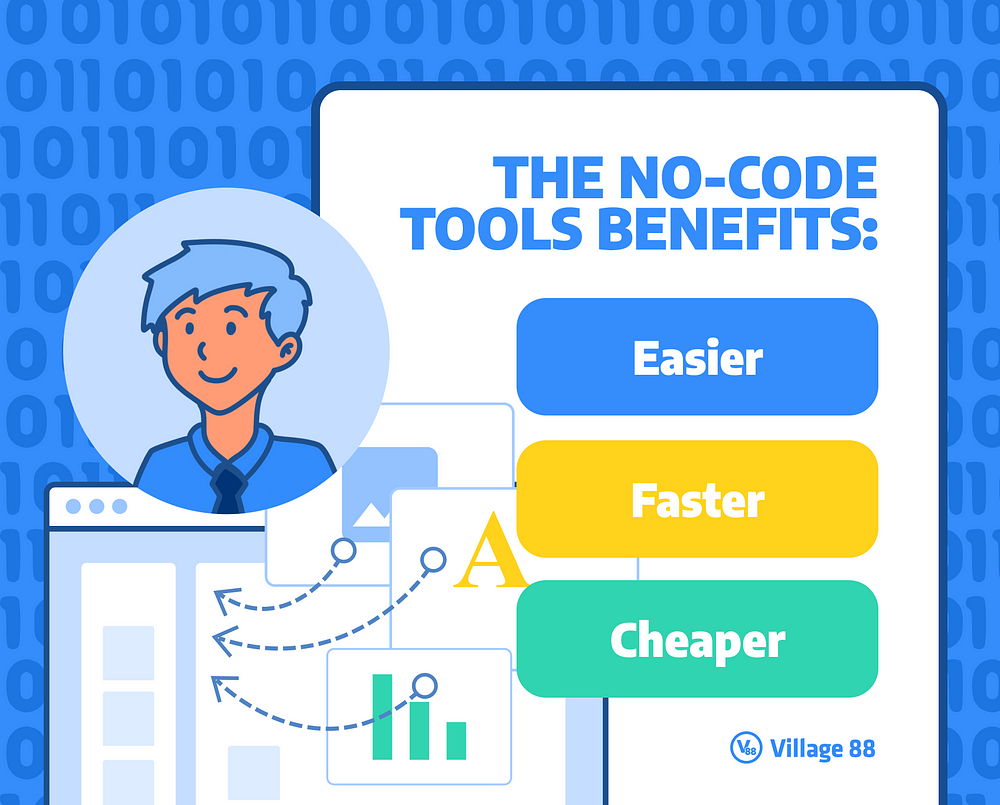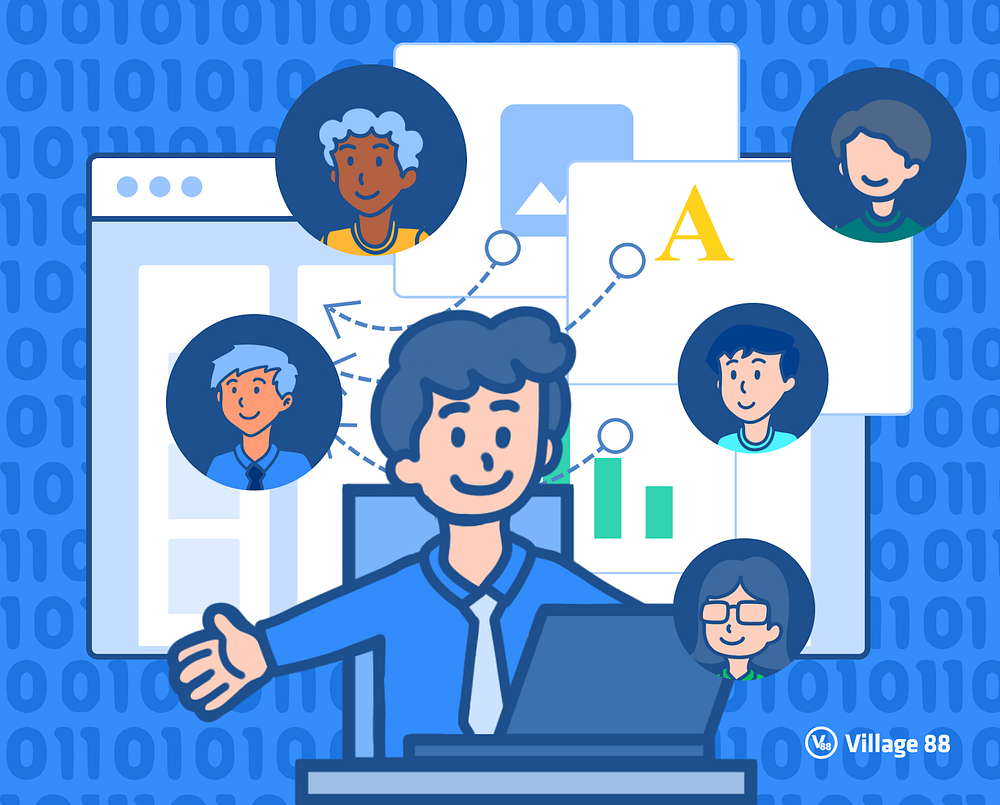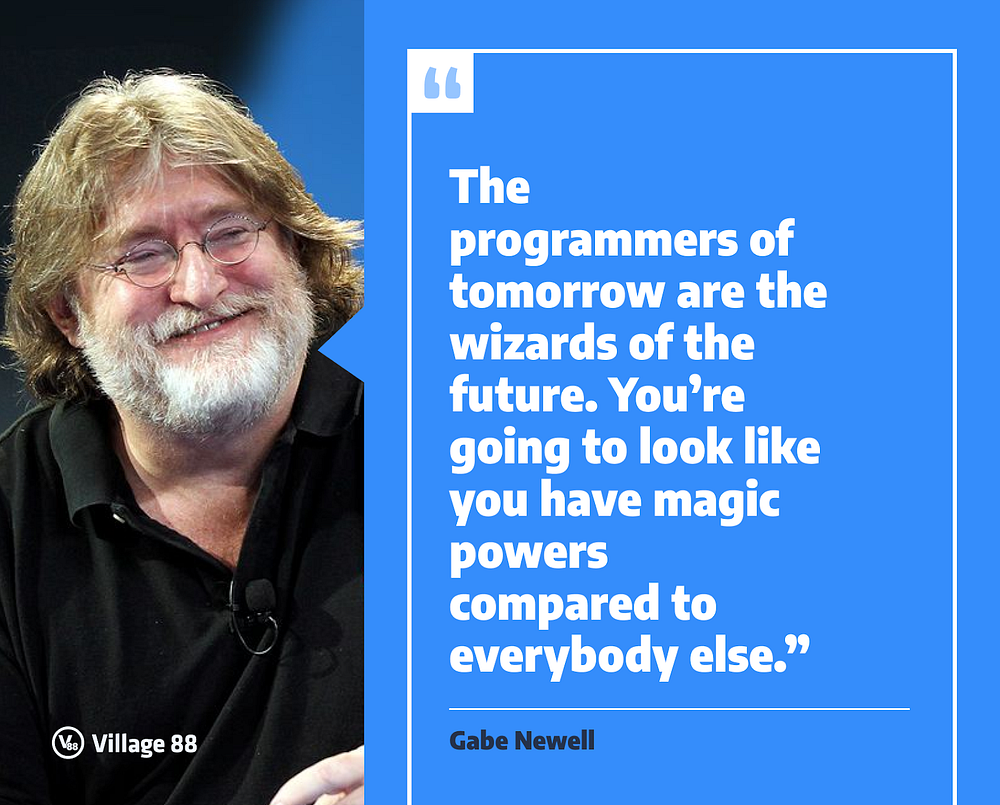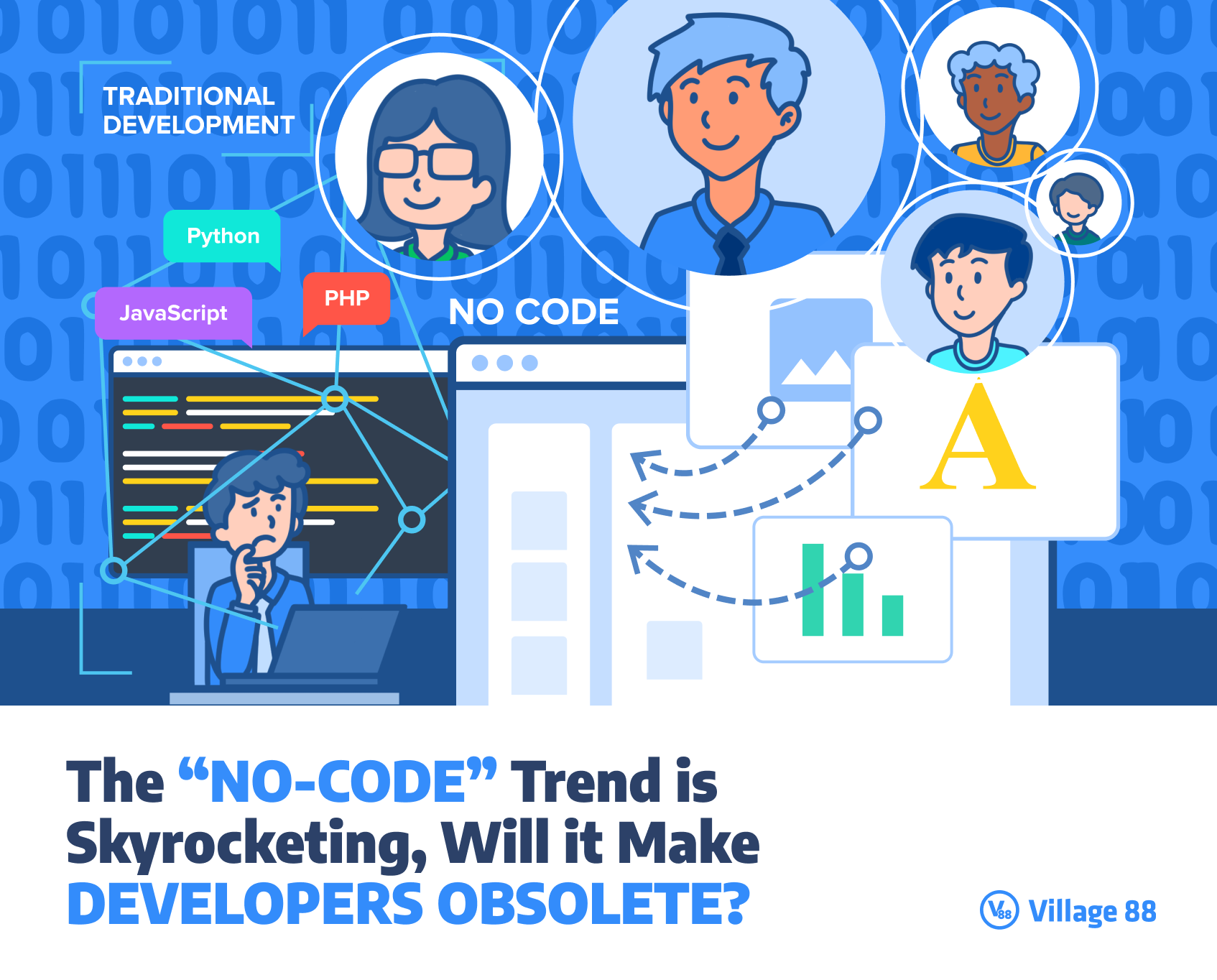Modern technology makes a lot of tedious tasks effortless and more accessible than ever. What usually was hours of doing — with lots of effort to give — are now just a tap or click away. For example, clothes shopping.
The traditional way makes you go out, use your car or take a cab, fall in line to pay, then use your car again or grab a cab to go home.
While in a modern way, you just grab your phone, go to a shopping app, choose an item, pay, and then wait. Not to mention, while you’re also doing other chores like folding clothes or waiting for your food to be cooked.
Shopping apps to shop, social media apps to connect with loved ones, video sites for current affairs, and more platforms we use today are all made by developers. And what do developers do? They write codes and program these software apps and sites according to users’ needs.
But some platforms now offer no-code apps or website building. When coding is what developers do, will the “no-code” trend make developers obsolete? Let’s find out!
But first, what are no-code tools?
In simple words, no-code tools are apps or platforms that allow users to perform — usually require coding — tasks without writing a single line of code.
For example, no-code tools enable users to build their apps or create their websites by just dragging and dropping. Even someone without a coding background can make their apps or sites as quickly as editing their profile pictures using photo editors. No brainstorming about algorithms, logic, and problem-solving, no developer’s stress.
Although the no-code movement is currently not polished yet, someday, we might be able to create anything from scratch. After all, technology’s purpose is to make humanity’s life more convenient, and its rapid growth is not stopping to beat yesterday technology today’s technology.
But how did the no-code movement start?
Believe it or not, it was mentioned way back in 1982, stated in a book authored by James Martin, an English Information Technology consultant, and author. He published his 15th book on the software industry called “Application Development without Programmers.”
In the preface of his book, he states, “The number of programmers available per computer is shrinking so fast that most computers in the future must be put to work at least in part without programmers.”
And in 1985, Microsoft Excel came to the tech world, enabling users to manipulate data without writing code. More tools came after, like cloud computing tools, apps or website building, project management platforms, analytics, and more.
But are no-code tools important?

The benefits we, as users, get from using the no-code tools are essential. Why? Because it makes life easier, do things faster and somewhat cheaper. Most of us like effortless work. Here are some examples:
- We use mops instead of our own hands to clean the floor.
- We use stoves or rice cookers instead of wood and fire to cook rice.
- We electric fans instead of fanning ourselves.
You get the idea. We always prefer ways to exert less effort, with less thinking, use less time, and sometimes, save money. And that’s exactly why no-code tools are important.
But are no-code tools THAT popular?
Yes, they are. Many business owners, bloggers, even simple employees, and even students are using the no-code apps and platforms. Like what we’ve discussed earlier, Microsoft Excel. Many of us still use this helpful tool to this day.
But here are other most popular no-code tools:
WordPress — a content management system (CMS) that allows users to host and build websites. It also allows users to customize their website by using their plugins and templates to fit users’ business, blog, portfolio, or online store without writing a single line of code. As of 2022, WordPress is used by 43.3% of all websites, and its usage has increased an average of 12% per year since 2011. (W3techs)
Typeform — this tool is used for job applications, creative content marketing, feedback from users or employees, organizing events, handling customer requests or complaints, product ideas, and many more.
Sketch2Code — a tool that uses AI to convert hand-written drawings to working HTML prototypes. Even someone without a design background can scribble an obviously-looking landing page or website, and the changes will be applied instantly.
Bubble — allows users to create interactive apps for desktop and mobile web browsers. They offer all the features needed to build sites like Facebook or Airbnb. Users are entirely in control when customizing whatever they are creating.
Zoho Creator — a tool with a drag-and-drop interface that allows users to create and manage a broad range of business apps. Like the other mentioned tools, building is more straightforward and faster than building everything from scratch using code.
These are undeniably awesome tools. People used to think developers were modern. Now that we have tools that won’t need coding, some might believe developers are old-fashioned and that the available tools are enough.
But behind these modern tools are more modern developers!

The answer to the question about “Will the no-code trend make developers obsolete?” is a big “NO.” The truth behind every magic-like and modern tool is that more modern developers are still there.
Developers program these tools. Not just programmed, they are also maintained and improved by developers. Without modern and futuristic developers, no modern apps can beat their yesterday’s version.
No matter how important and cool these no-code tools may become, they are still nothing without developers, for they still need to be maintained by developers. Let’s talk about this remarkable statement from Des Traynor, a co-founder of Intercom.
“There’s a big difference between making a simple product and making a product simple.”
Let’s connect it with no-code tools and software developers, the no-code devices being the “making a simple product” and developers “making a product simple.”
The no-code tools are products made simple by developers to create simple products.
There are no “buts” in the future of developers, just awesomeness.

As per Gabe Newell, an American businessman and the co-founder and president of the video game developer and digital distribution company Valve, “The programmers of tomorrow are the wizards of the future. You’re going to look like you have the magic powers compared to everybody else.”
There’s no doubt. That only sounds “awesome” in every way.
It seems wizardry is not only learned in Hogwarts; not only can wands perform magic, and not only can Harry Pottercast spells. You can learn it at school or at home through self-study and free courses available everywhere. You can use your computer to perform the magic and your codes to program the spells.
Although it’s not magic, it’s programming.
Kidding aside, learning how to code and program to create better products for a better future is always a good and even the best decision. Not just for yourself, but for the world. After all, being a part of the tech industry is also part of changing the world — for the better.
And if you’re interested to learn, at Village 88, we offer a training program for people willing to learn how to code. Absolutely free, no hidden charges, no percentage from your salary when you land a job, nothing. No buts, just free.
Want to join us? Please check out our website to register or to learn more about us. You can also contact us on our FB page for other inquiries. We’d love to hear from you! Together, let’s make the tech world a lot more awesome.






Have a great day today.Thank you always.
Thank you for your good blog as always.Have a great day today.
Have a great day today.I’m always enjoying the good blog.
Thank you for your good blog as always.Have a great day today